

Expo 2020, the World Expo hosted by Dubai, has come to an end. After being postponed due to the COVID-19 pandemic, the event was open to the public from October 2021 to March 2022.
A stellar feat of human ingenuity, the latest world’s fair united over 24 million people from around the globe in its six months. But what will we say of the event in a few years?
Before we look at the legacy of Expo 2020, let’s take a step back.
In April 2020, the government of the United Arab Emirates requested a postponement of the event. A month later, the necessary voting and paperwork were done — and the world’s fair was officially postponed by a year.
Due to the pandemic, stringent safety measures were necessary. Proof of vaccination or a negative PCR test result, face masks, social distancing, and hand sanitising were all meant to make visitors feel safe.
Of course, those measures only really work when everyone follows them; staff, volunteers, and visitors alike. I visited Expo 2020 in its last month. Staff barely even looked at the QR code we showed at the entry and social distancing was virtually nonexistent.
Nonetheless, organising a $33.4B event is quite the challenge, to say the least — and no part of the pandemic made it any easier. But if any city is going to be able to tackle such a massive urban planning challenge, surely it’ll be the place where seemingly all buildings have ‘Tower’, ‘Hotel’, or ‘Corp’ in their name. Right?
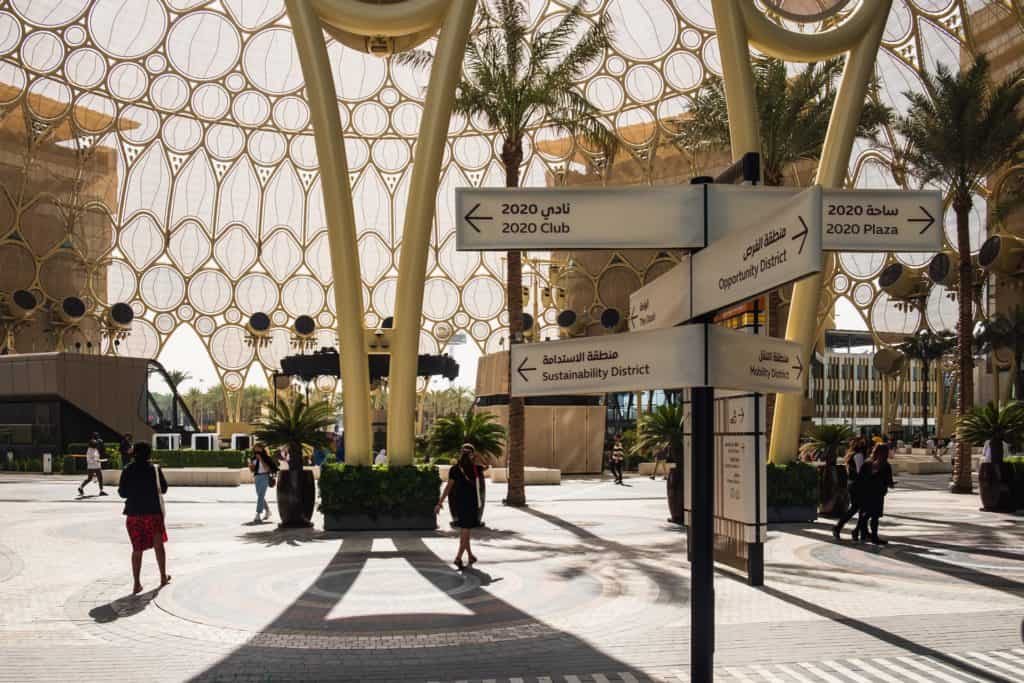
Expo 2020 is the world’s biggest event of the year, outside the Olympics. In other words: an opportunity that international architecture, engineering, and construction firms didn’t hesitate to jump on.
The main site of Expo 2020 was a 4.38 square kilometre section of land near Dubai’s southern border with Abu Dhabi. A stretch of reclaimed desert sand that redefined urban planning, if you will.
In this area, three thematic districts surround the central Al Wasl Plaza — the beating heart of the event. Each district focuses on one of the three sub-themes of Expo 2020: Sustainability, Mobility, and Opportunity.
With countless suppliers working on the event for years, Expo 2020 pushed the boundaries of architecture, infrastructure, and the dexterity of the human spirit.
The road to Expo 2020 in numbers
The theme of Expo 2020 is ‘Connecting Minds, Creating the Future’. In the words of the Bureau International des Expositions (BIE), the organisation behind World Expos:
“Expo 2020’s theme is based on the belief that bringing the world together can catalyse an exchange of new perspectives and inspire action to deliver real-life solutions to real-world challenges.”
Bureau International des Expositions (BIE)

Expo 2020 aimed to create the greatest global gathering in history. As only the second expo in history with more than 190 attending countries, it’s safe to say the organisers succeeded.
The three sub-themes — Sustainability, Mobility, and Opportunity — inspired the 24M+ visitors to care for the planet, explore new frontiers, and build a better future for all.
Ironic, given some of the event’s sponsors:
Though Expo visitors wouldn’t notice it when visiting the site, some controversies have tainted the event’s reputation.
The biggest controversy is the event’s death count of six — three work-related deaths and three deaths due to COVID. Though officials insisted the safety standards were ‘world-class’, more than 70 workers regrettably still suffered serious injuries during construction.
This raises questions about the economy of migrant workers in the Gulf region. This is a serious issue — migrant workers make up over 80% of the population of Dubai, after all. Human rights groups often criticise countries like the UAE and Qatar (host of the 2022 FIFA World Cup). Overcrowding in worker accommodation, long working hours, low pay, and racial discrimination were common complaints among the (largely South Asian) workforce that made Expo 2020 possible.
For this reason, the Human Rights Watch called the expo part of “UAE’s calculated strategy to whitewash its image”. The European Parliament even urged states not to take part, citing human rights violations and the jailing of activists.
“Expo 2020 is yet another opportunity for the UAE to falsely present itself on the world stage as open, tolerant, and rights-respecting while shutting down the space for politics, public discourse, and activism.”
Michael Page, Deputy Middle East Director at Human Rights Watch
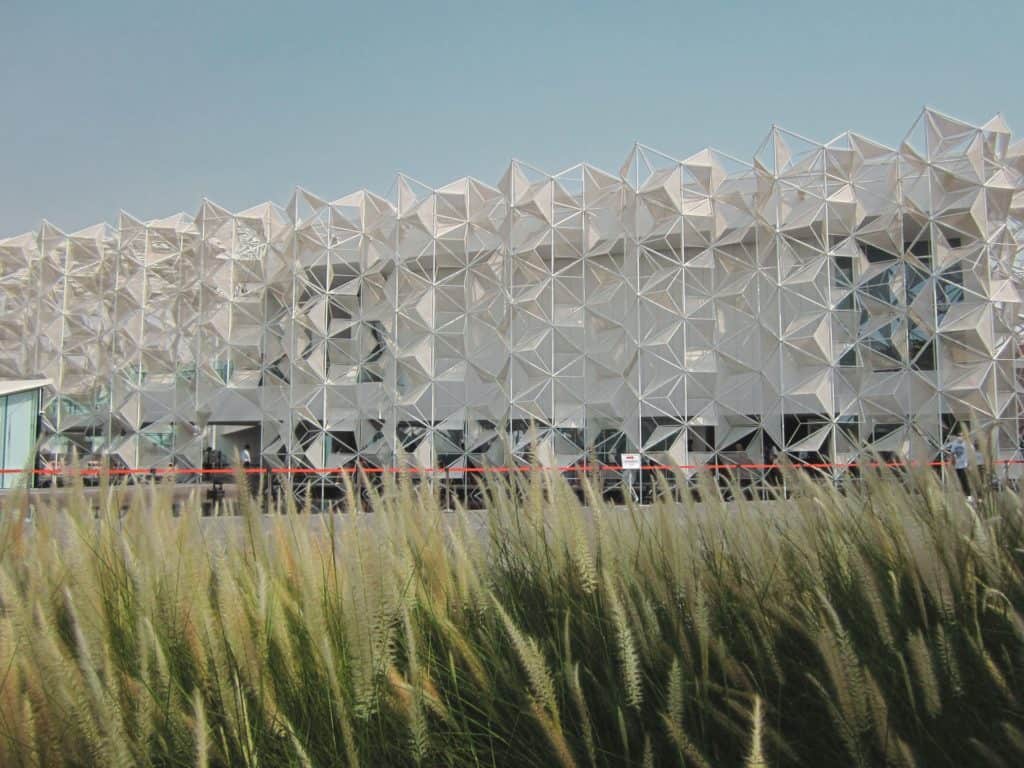
While Expo 2020 faced challenges with its migrant workforce, the event’s legacy will redefine urban planning and sustainability. The site will transform into District 2020 — a city reminiscent of Singapore’s 42,000-home eco ‘smart’ development.
District 2020 will be a so-called ’15-minute city’ — if everything goes according to plan, at least. “Residents should be able to access all amenities on foot in 15 minutes or less”, explains Dina Storey (Director of Sustainability Operations at Expo 2020).
The pavilions and other structures on the expo site will be remodelled into offices, innovation centres, and even sustainable housing.
Whereas expos in the past often failed to find a proper home in the host city’s wider urban development, District 2020 is the most ambitious repurposing plan to date.
And with 10 kilometres of cycle tracks, 5 kilometres of jogging paths, and a 4-kilometre autonomous vehicle public transit route, the plan seems to be set up for success.
It remains to be seen how much of the plan will come to fruition, but one thing is certain. The expos of the future have now seen that it is possible to have a strategy in place to avoid their sites falling into ruin after the event ends.
Yes, Osaka 2025 — we’re all looking at you.
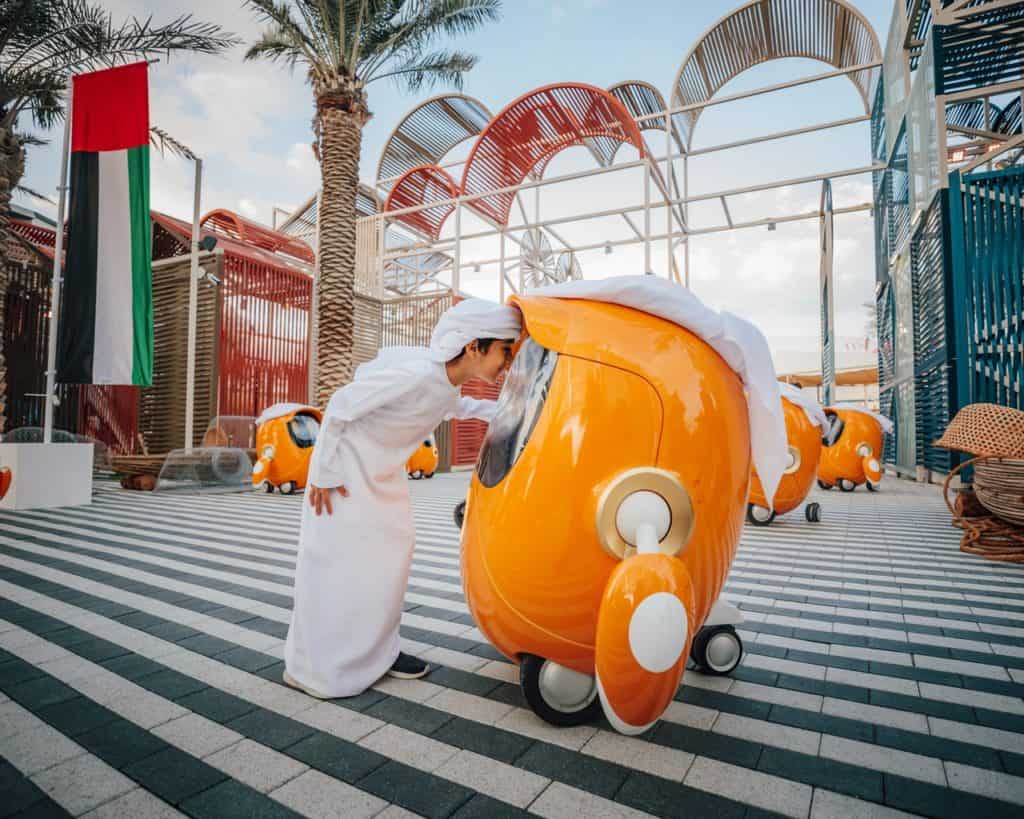
I believe we will always remember Expo 2020 as the expo that was almost one of the greatest in modern history.
Yes, the expo added 2% to the United Arab Emirates’ GDP. And it played a vital role in the country’s economic recovery from the pandemic. Yes, it was also a major contributor to the digital transformation of Dubai and the UAE. But as it stands now, the Big Three world expos — yes, I just made that up — need not surrender their thrones.
London 1851 (The Great Exhibition) will always be the first world expo.
Shanghai 2010 is still the biggest world expo to date.
And the most iconic world expo for a Belgian travel blogger — yours truly, for example — is still Brussels 1958, without a doubt.
Had COVID not been a factor, who knows what the economic, cultural, and diplomatic impact of Dubai 2020 would have been?
With District 2020, an ambitious plan to hang on to the legacy of Expo 2020 is in place. And now, it’s up to the people of Dubai to deliver on their promise.
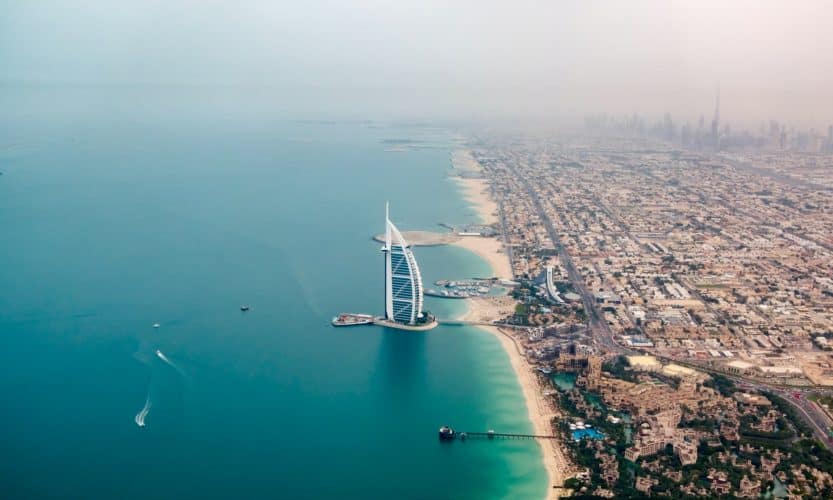
When travelling to Dubai, there are a few things you should know. And I am here to tell you all about it. Let’s dive right in!
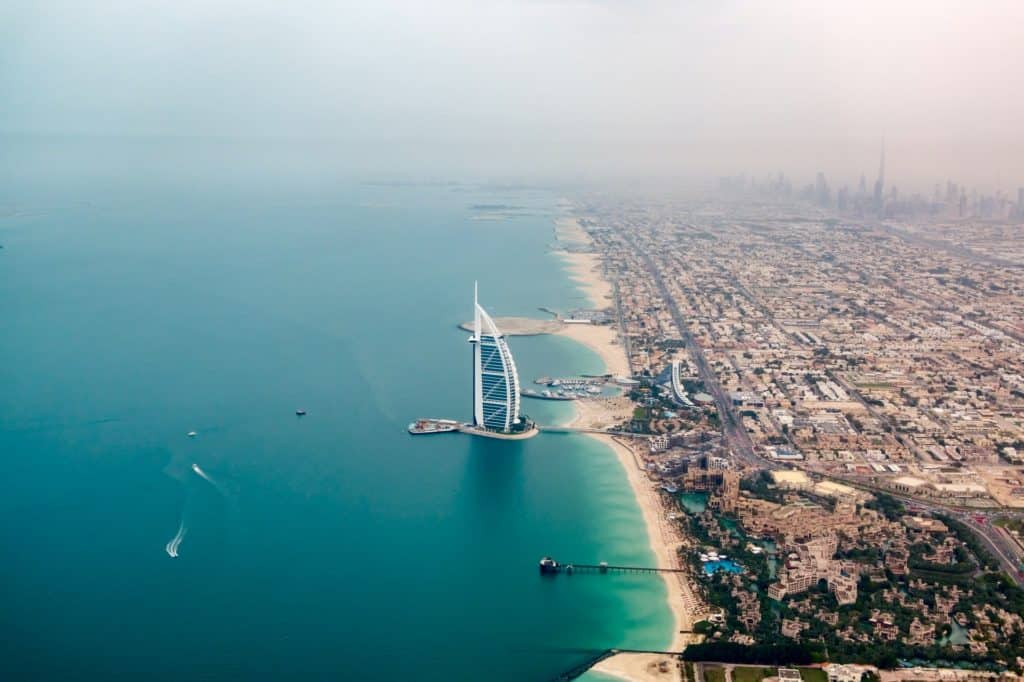
With a population of over 3 million, Dubai is the largest city in the United Arab Emirates (UAE) and the capital of the Emirate of Dubai.
The city was established in the 18th century as a small fishing village and taken over in 1830 by a segment of the Bani Yas tribe. At the time, this tribe was led by the Maktoum Family — whose descendants still rule Dubai today.
In 1966, oil was discovered in Dubai — stimulating economic growth and attracting traders to settle in the city (which had already grown in size thanks to its flourishing pearling industry).
Over the past fifty years, Dubai has transformed from a minor settlement in the Persian Gulf to a major economic, architectural, and touristic hub in the Middle East.
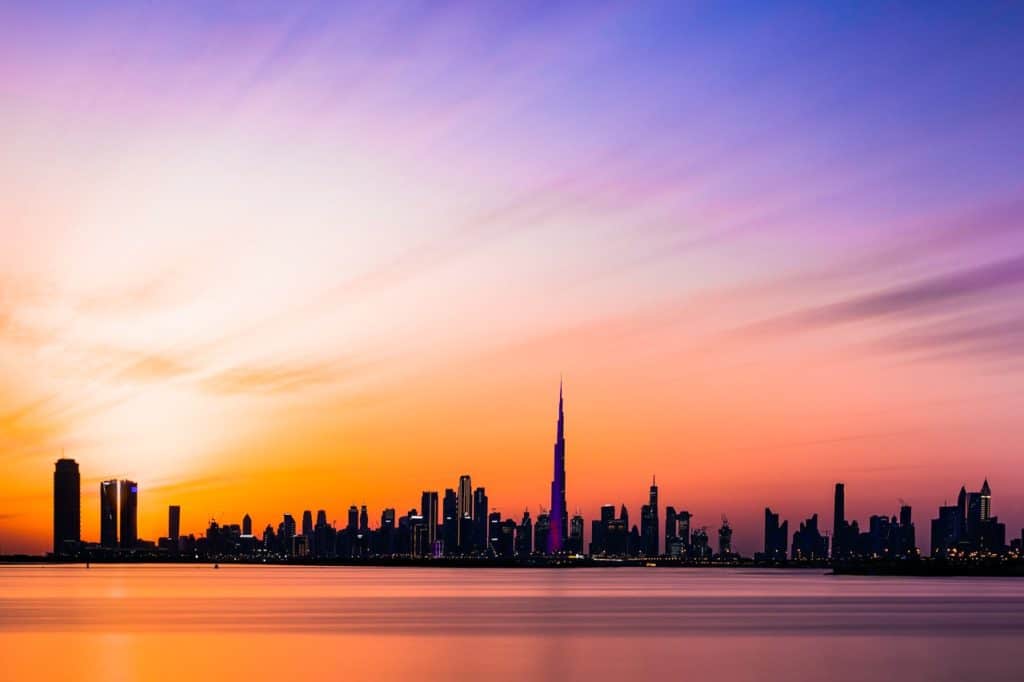
The official religion of the UAE is Islam. While it is true that Dubai is among the more open-minded destinations in the Middle East, the country — and, by extension, the city — practices Sharia law. Things that might seem normal to a typical western traveller, like sharing a hotel room as an unmarried couple, are prohibited under Sharia. Read up on this before travelling to Dubai.
In general, you won’t need to dress differently than you would on a holiday at Palm Springs or some European beach destination. When you’re visiting religious buildings, traditional markets, or rural areas, however, it’s good practice to be respectful of local habits. In other words, it’s advisable for people of all genders to wear clothes that cover your arms and legs.
Dubai is one of the world’s most popular tourist destinations. As such, the Dubaian people — yes, Dubaian is a real word — know more than enough English to understand your order at the restaurant or your destinations in the cab. If you can understand this article, you won’t have any linguistic trouble in Dubai.
While selling and consuming alcohol is legal in Dubai, it is strictly regulated. Non-Muslim adults (21+) are allowed to consume alcohol in licensed venues (most hotels, clubs, and restaurants have a license). Drug laws are less lenient, however. If you are found in possession of drugs — no matter what amount — you will likely be arrested and jailed.
Generally speaking, Dubai is a very safe destination for international travellers. Violent law is virtually nonexistent and petty theft is rare. That said, things like homosexual acts and speaking out against the royal family are illegal, so keep that in mind when travelling to Dubai.
It’s true that Dubai doesn’t have quite the cultural history of other major cities around the world. That being said, there are plenty of things to do in and around the emirate to get you excited — whether you’re looking for an adrenaline rush, the latest fashion, or just a beautiful view.
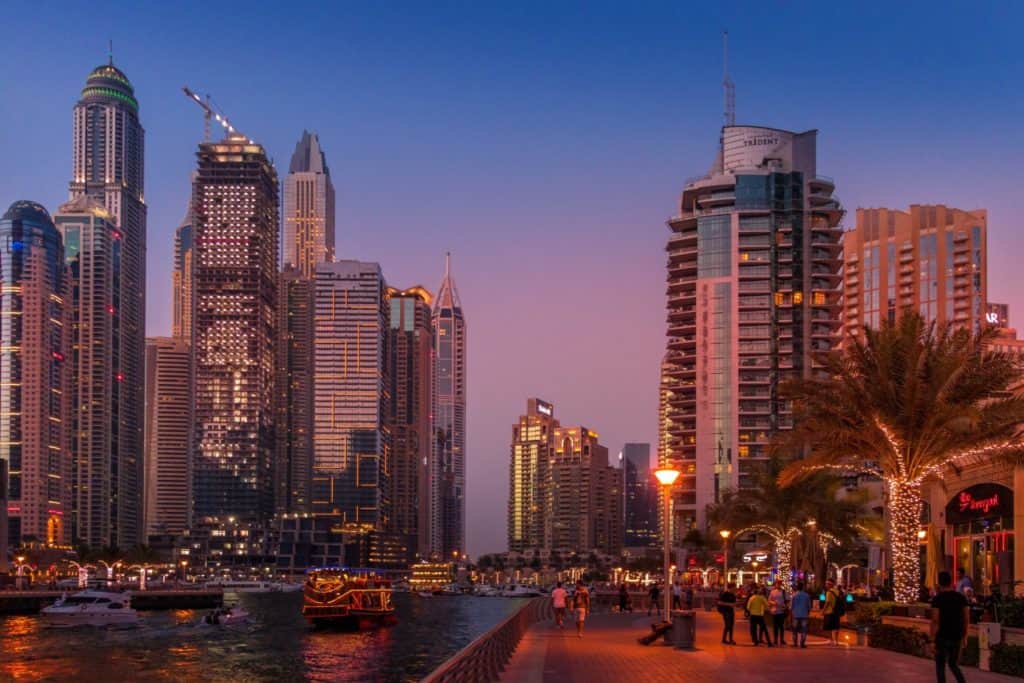


When travelling to Dubai, taking a day trip to Abu Dhabi is almost like a prerequisite. It would be a shame to go to Dubai and not take a day out of your itinerary to visit the largest of the Emirates.
Two things you absolutely can’t miss are the Sheikh Zayed Grand Mosque and the Louvre.
If you’re not a very experienced traveller — or if you just need a bit of guidance — you may be confused when packing for your trip to Dubai.
Luckily, the internet (in this case: me) is here to help!
I’ve compiled a Dubai packing list in a useful Google Sheets spreadsheet, just for you.
All you have to do? Fill in your name and email in the form below, and you’ll get the link sent to you.

Falling asleep in the desert after a camel safari while admiring the stars in Jaisalmer is one of the most surreal experiences I’ve ever had.
This is the story of how I ended up there.
Note: at the end of this post, I’ll link a Spotify playlist of songs you can listen to when you’re stargazing yourself or when you want to feel blissful when looking at a sunset.
I included a bit of this experience in my travel videos. Here’s one of them:
About a year ago, I was trying to figure out where my big summer holiday was going to take me in 2019.
It didn’t take me long to realise that I wanted to go on a group tour, so I started looking into Belgian travel agents that offer group tours to far-away countries. After all, I believe most countries in Europe can be visited as a solo traveller relatively safely.
I wanted an adventure that only a group tour would be able to give me.
I quickly came across Joker, a Belgian tour operator that specialises in sustainable small-group tours. One of their concepts is a trip where everyone is older than 18 and younger than 26. And that immediately spoke to me.
Related: 10 things to know before booking your first group tour
And so, after a while, I ended up with a short list of potential candidates for my summer trip with Joker.
After finding out that the tours to Sri Lanka and Borneo were already fully booked, I was left with three options.
India, Norway or Costa Rica/Nicaragua.
Some further research told me that the Costa Rica/Nicaragua pairing was a bit above budget and the Norway tour was going to be too challenging physically.
So, I ended up booking a 3-week road trip through Rajasthan.
I started counting down the days until I left for India. As time passed, months turned to weeks, weeks turned to days, and days turned to “I’m leaving tomorrow”.
We first spent some time exploring all the glory of Rajasthan’s capital city, Jaipur. As I describe our entire itinerary in this post, I won’t go into much detail about what we did.
However, after an unusual journey with the sleeper train, we arrived in Jaisalmer.
Jaisalmer is one of the main cities in the Great Indian Desert and is known as the Golden City.
See also: How to study abroad in Salamanca (Spain’s Golden City)
The fourteen of us visited the Jaisalmer Fort and spent some time having a drink by the lake before heading out to the desert for our safari.
Quick disclaimer: I had my doubts about the ethical implications of a desert safari that included a camel ride. However, I was assured that the animals were treated very fairly and, as I noticed, they were.

We opted for Renuka Camel Safari to host this endeavour for us, and I’m very happy that we did. They provided us with a truly magical experience, and I’m not just saying that.
If you’re considering going on a camel safari in India yourself, there are a few things you should know beforehand.
How to get to your sleeping spot
If you’re starting your camel safari in Jaisalmer, you’ll probably have to take a jeep to get to the camels.
The jeep drivers will come pick you up at your hostel and they’ll know exactly where to go, so you don’t need to worry about that.
For us, the jeep ride took a little over an hour.
After we got to the camels, we still got to ride them for another hour or so.

Riding a camel is uncomfortable
Don’t expect this to be the best hour of your life.
Yes, it’s a great experience and you may never get to stroll through the desert on a camel ever again.
But don’t let the cushions on the saddle fool you: you will more than likely be uncomfortable throughout the whole ride.
In fact, even though it’s such a special experience, you’ll probably be happy that it’s over.

Things to bring on a camel safari
Every camel safari is different, but here are a few essential things you may or may not need to bring on yours.
Some of these may be supplied by the company that organised your camel safari, but just check with them beforehand what you do and don’t need to bring.
The food in the desert
If your safari is like ours, you’ll ride your camel to a base camp where locals are already preparing your dinner.
And if you’re from the west, like me, you probably don’t want to see how they do it.
Although it actually tasted great, something told me that the preparation methods weren’t squeaky clean (nor should you expect them to be — you’re in the desert, for God’s sake).
Dung beetles are all around you
Yep.
You’ll see hundreds of dung beetles during your camel ride to base camp and you’ll see dozens more once you’re there.

My most – ahem – interesting encounter with dung beetles was when we woke up around 7:30 am. I had the beetles coming at me WHILE I was in the middle of a number two.
You’d better believe that was the fastest deuce I had ever dropped.
Photography in the desert
Before the sun goes down, it’s easy to take photos in the desert. The scenery around you is gorgeous enough as it is, and if you’re able to get some of that golden light (just before sunset or just after sunrise) in there, you’ll be great.

However, you should know that it’s very difficult to take decent pictures of the starry sky if you don’t know what you’re doing.
After the sun goes down, you’ll just have to live in the moment and enjoy the night sky without light pollution, coming to peace with the fact that you won’t have a good picture of it.
When I tell you that the most memorable part of our desert safari wasn’t the camel ride, sleeping in the desert or eating food that was prepared by locals, you wouldn’t believe me, right?
Well, it’s true.
The best part of going on a camel safari in India is stargazing.
Imagine this.
You’ve just had a typical Indian dinner of naan and dal while talking to the people who prepared it. Afterwards, you climb one of the sandy hills with your group – laughing, talking and drinking.
With time, more and more of your friends start to go to bed, but you’re not tired. And you find out that two other people aren’t tired either.
So you stay on the hill.
You look at the stars, listening to relaxing music and talking about love, happiness, friendship, sex, depression and fate.
Every few minutes, a shooting star passes by and you all make a wish.
That’s what it was like.
And all of a sudden, it was 3 am and we saw someone walk from the camp beds to our spot in the hills. Our group leader – who couldn’t fall asleep – lay down next to us and joined the conversation.
Just like that, we lost track of time and we were stargazing at 4 am.
Now, we knew that we had to wake up around 7 am to take the camels back to the jeep, which would take us back to the city.
But it was so worth it.
If I could do it all again, I would not hesitate one moment.
As a little bonus, here’s a Spotify playlist of songs we listened to while admiring the starry, starry night (yes, that’s a reference to Don McLean’s song).
Big thanks to Laura J. and Wannes V. for letting me use the great pictures they took during our camel safari! <3
PIN IT!



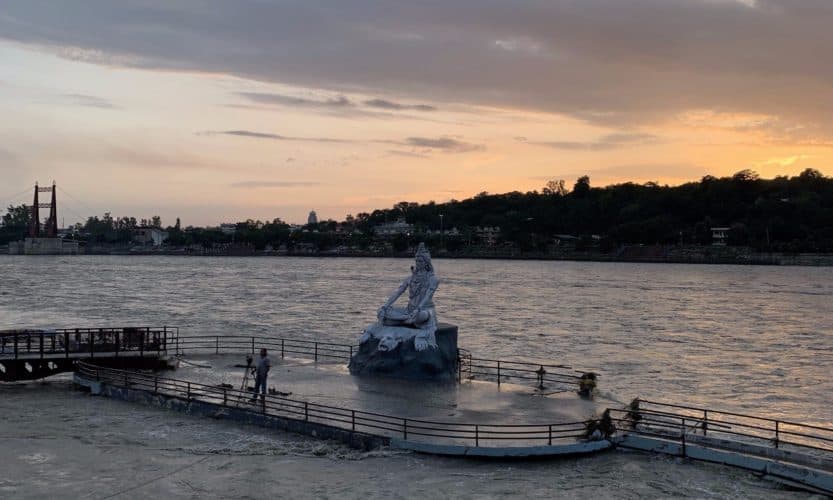
I recently came home from one of the best trips of my life. There. I said it. And all you’ll need to follow along is this 3-week Rajasthan itinerary.
I went on a group tour to India with Joker, a Belgian travel agency (website only available in Dutch and French).
Related: 10 tips for your first group tour
The tour comprised just over three weeks travelling around India’s most popular region among travellers: Rajasthan.
And now, I’m here to share the joy and give you the information you need for a kick-ass road trip through this region. Ladies, gentlemen and non-binary folk: this is the perfect 3-week Rajasthan itinerary.
Note: I won’t tell you exactly when to go where on your Rajasthan road trip. It’s very difficult – if not impossible – to completely plan a trip to India beforehand.
What I will do in this post, however, is this:
Skip ahead if you want to:
Before we get started, take a look at this video I made to get a feel of what India is actually like.
There are many reasons why you should consider a trip to India’s crown jewel region. Here are just a few of them.
Thanks to Rajasthan’s fascinating history of wealthy royals and architectural legacy, impressive palaces, forts and temples are spread throughout the region, each one more breathtaking than the last.
Among the Indian population, Rajasthan is known as one of the most traditional and religious areas of the country. That explains the many energetic festivals that occur throughout the year. Diwali, Holi, Teej … The list goes on and on.

And while Rajasthan is frequented by travellers for its history and culture, an afternoon strolling through the big city bazaars can’t be missing from your Rajasthan itinerary. Pottery, clothing, souvenirs, jewellery or spices: whatever it is you’re looking for, you can find it in the bazaars.
Last, but definitely not least: the state of Rajasthan is often remembered for its exciting wildlife encounters. National parks, which were originally used as hunting grounds for the state’s rulers, are sprinkled through Rajasthan and now serve and wildlife sanctuaries.
The perfect Rajasthan road trip starts in Jaipur, the state’s mighty capital city.
Also known as the Pink City for the many shades of pink, red and amber that are present in the fortified city centre, Jaipur was declared an UNESCO World Heritage Site in 2019.

What to do in Jaipur:
How long to stay in Jaipur: Four days in the capital of Rajasthan is an absolute minimum to see everything the city has to offer.
How to get from Jaipur to Jaisalmer: Take the night train from Jaipur Railway Station to Jaisalmer Railway Station. Book tickets on the Indian Railway’s official website.
After catching the sleeper train from Jaipur, you’ll arrive at Rajasthan’s Golden City, Jaisalmer.
This city is located at the heart of the Thar Desert and is known for the yellow sandstone that is used in many of its buildings, including the impressive Jaisalmer Fort.

What to do in Jaisalmer:
How long to stay in Jaisalmer: Three days and three nights, including one night in the desert, is plenty to discover Jaisalmer in all of its glory.
How to get from Jaisalmer to Jodhpur: Take a regular, direct train from Jaisalmer Railway Station to Jodhpur Junction. Book tickets on the Indian Railway’s official website.
After your adventurous desert safari in Jaisalmer, it’s time to head back to big city life.
Jodhpur is Rajasthan’s second biggest city. It’s known among travellers as the Blue City and among Indian residents as the Sun City. Must be worth a visit, right?

What to do in Jodhpur:
How long to stay in Jodhpur: Anywhere between two and four days should suffice, counting on a full day to explore the Fort and everything around it.
How to get from Jodhpur to Udaipur: Take an early bus to Udaipur, preferably one that leaves Jodhpur before 6 am. The journey to Udaipur should take 4 to 5 hours.
With nicknames such as ‘the City of Lakes’ and ‘the Venice of the East’, it’s no wonder that British explorer James Tod called Udaipur ‘the most romantic spot on the continent of India‘.
You’ll soon find out for yourself why Udaipur has such a strong reputation among travellers.

What to do in Udaipur:
How long to stay in Udaipur: Including the night at Krishna Ranch, you should stay in Udaipur anywhere from three to five days.
How to get from Udaipur to Agra: Take the sleeper train from Udaipur City to Agra Cannt. Book tickets on the Indian Railway’s official website.
I know, I know. Agra is not located in Rajasthan. So, technically, I lied by calling this a Rajasthan itinerary.
You’ll forgive me once you feast your eyes on the Taj Mahal. Trust me.

What to do in Agra:
How long to stay in Agra: No longer than two days. Preferably, you’ll visit Agra Fort and the Baby Taj in the afternoon, then spend the night in Agra and visit the Taj early the following morning.
How to get from Agra to Delhi: Take a regular train from Agra Cantt to one of the many train stations in Delhi. This is a short trip that should only take about two hours. Book tickets on the Indian Railway’s official website.

I’m not going to lie to you: you’re only spending one night here to avoid having to take the dreadful journey from Agra to Rishikesh.
But don’t worry: you’ll come back to Delhi in a few days and your Rajasthan road trip will end there.
So find a nice place to stay the night and wake up refreshed for an early train to Haridwar. (Ask your hostel to arrange a taxi from Haridwar to Rishikesh, because most trains don’t stop at Rishikesh)
Again: Rishikesh is not located in Rajasthan, but since you’ve already gone to Agra, you might as well pass by Rishikesh.
Don’t worry, it’ll be our little secret.
Yoga Capital of the World, Gateway to the Himalayas, …
Cool nicknames, so it’s got to be worth exploring. You get it.

What to do in Rishikesh:
How long to stay in Rishikesh: Assuming you want to unwind and relax after two weeks of non-stop exploring, three to four days in Rishikesh is ideal to do everything listed above at a calm pace.
How to get from Rishikesh to Delhi: Take a regular train from Haridwar Junction to one of Delhi’s train stations. Book tickets on the Indian Railway’s official website.
Since it’s quite likely that your flight will depart from Indira Gandhi International Airport, it makes sense for the last stop on your Rajasthan road trip to be Delhi. (Although, again, Delhi is technically not a part of Rajasthan)

What to do in Delhi:
How long to stay in Delhi: In a city that over 15 million people call home, you could spend a lifetime and still not see it all. However, for the purposes of this road trip, two to three days should suffice.
Now that you have the perfect Rajasthan itinerary at your feet, there’s nothing stopping you from the trip of a lifetime.
Plan your Rajasthan road trip:
PIN IT!



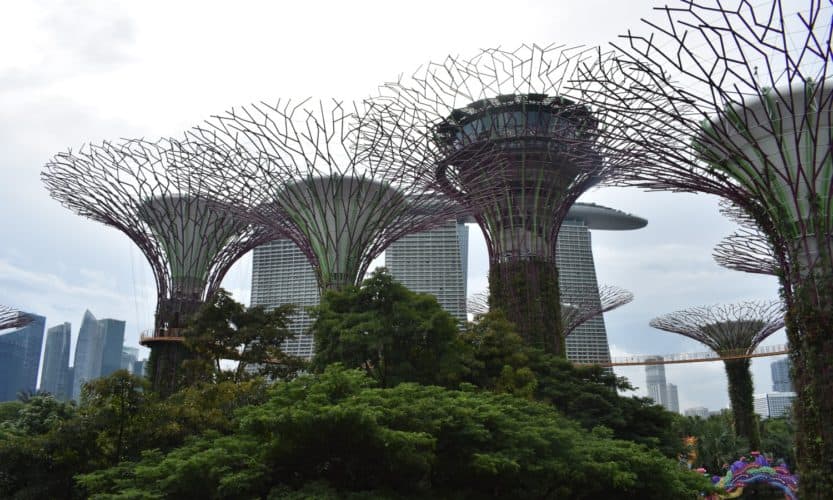
I know. Layovers aren’t the most exciting thing in the world. But who said layovers can’t be fun? In this guide, I show you how to rock a layover in Singapore, including information about visas, where to stay, where to eat and an example of a 12-hour itinerary for Singapore.
In this post:
Why don’t you start off by watching this short video of how I experienced my layover in Singapore last summer?
Disclaimer: this post may contain affiliate links. If you make a purchase through one of these links, I’ll receive a small commission, at no extra cost to you. Thanks for supporting Ars Currendi!
Question: Do I need a visa for a stopover in Singapore?
You probably don’t. Most nationalities do not require a visa to enter Singapore. If you’re from the United States, the United Kingdom, Canada, Australia or most European countries, you can enter Singapore without a visa.
If you’re not from any of the aforementioned countries, it’s a good idea to check the government’s website to see if you need a visa to get into Singapore.
Question: Can I leave Changi Airport during transit?
Again, if you’re from one of the countries mentioned above, you can leave the airport without a visa.
If you’re from a visa-requiring country, you should apply for a visa to leave Singapore Airport during transit before flying to Singapore. Check with your embassy if you’re not sure how to do this.
Now that we’ve got the visa information out of the way, let’s take a look at some basic travel facts about Singapore.
Singapore is an island city-state located just south of Malaysia. It’s one of the smallest, but most densely populated countries in the world and it’s mostly known as a global hub for education, finance and entertainment.
It really all depends on how much time you have, as with any layover.
Singapore is one of the best countries for a layover, because the city is not too big, everything is easily accessible through public transport and there are a lot of things to do in a relatively small area.
And even if you have a lot of time, you might want to take it easy after a long-haul flight.
But still, there are quite a few things to do in Singapore when you’re short on time. Here are a few of my personal favourites if you are leaving the airport. (More detailed information in the Singapore itinerary below)
The airport of Singapore has consistently been named one of the top airports in the world. It consists of three interconnected terminals (T1, T2 and T3) and one separate terminal (T4).
Here are some things to do during a layover in Singapore airport:
If you follow this itinerary, you’ll be able to see all Singapore highlights in just 12 hours.
You could even do it more quickly, if you’re a fast traveller. Or if you’re travelling alone.
There are many things you can do in Singapore in one day. Here’s a useful overview of what you could fit into your one-day layover to get the most out of your stay.
Breakfast is the most important meal on a day. Even when you’re on a layover in a foreign country.
Here are some options for breakfast in Singapore.
For this suggested Singapore layover itinerary, you’ll be exploring some of the city’s neighbourhoods in the morning. On the menu: Little India and Chinatown.
What I would recommend is that you simply walk around these neighbourhoods, get lost in the narrow streets and take in the atmosphere.
I suggest you start your morning in Little India.

If you don’t want to stroll around without a goal, check out some things to do in Little India.
Next, move to Chinatown using Singapore’s very efficient train system, the MRT.
You could buy a Singapore Tourist Pass, but since you’re only here for a short layover, it’s cheaper to just buy tickets for single trips. You can buy tickets at any upgraded General Ticketing Machine at MRT stations.
Again, if you don’t feel like aimlessly wandering around Chinatown, check out these things to do in Chinatown.
Although Singapore is literally the most expensive city on earth, you can still get lunch on a budget.
Below are some options for lunch in Singapore:
With a belly full of delicious food, it’s time to continue exploring Singapore.
Next up are cultural heritage, nature, and some bad ass light shows. Let’s go!
From wherever you had lunch, make your way to Katong, a residential neighbourhood where you’ll find remnants of Peranakan heritage – like the houses below.

Stroll along vibrant shophouses, narrow backstreets and small boutique shops.
There are also plenty of cafés, coffeeshops, bars and ethnic restaurants in this area. Take your pick if you’re in need of a small break.
Next, we’re going to Gardens By The Bay.
If you’ve ever seen any pictures of Singapore, chances are you’ve seen the Supertree Grove, which is located in Gardens By The Bay. Don’t worry, we’ll get to that.

We’ll start off our visit to Gardens By The Bay by checking out the Cloud Forest observatory. This is an indoor tropical plant garden with a 30-metre waterfall as cherry on top.
You can spend as long as you like in the Cloud Forest. It’s definitely interesting enough to keep you busy for a few hours, but you could leave after 30 minutes, too.

Moving on: the Flower Dome. This is the world’s largest glass greenhouse and it could be described as a magnificent botanical garden. Same story here: you could stay here for hours, but you don’t have to.
The last thing you’re visiting before dinner is the Supertree Grove. Admission to the Grove is free.

The supertrees are up to 50 metres (which is equivalent to 16 storeys) high.
If you want to, you can walk on the skyway that runs through the supertrees at 22 metres high. Admission for this skyway is $8 for adults.
Don’t spend too much time here – you’ll come back after dinner to experience the supertrees at night.
Singapore is well-known throughout the world for its top class cuisine. What follows is a list of great restaurants in Singapore for an affordable price.
On many holidays, the day is over after you’ve had dinner. Not here.
You’ve still got two amazing light shows ahead of you. Oh, and did I mention they’re both free?
Here are the two shows you’ll want to attend:
The Garden Rhapsody show runs daily at 7:45 pm and 8:45 pm and it lasts for 15 minutes.

The Spectra show runs daily at 8 pm and 9 pm and it also lasts for 15 minutes.
I saw Garden Rhapsody (7:45 pm) first and then made my way to Marina Bay Sands for Spectra (9 pm). You could do it the other way around if you wanted to.

If your Singapore layover lasts for longer than just a few hours, you might just need a place to stay.
Here are some options for stopover accommodation in Singapore.
Hostels in Singapore
Airbnb in Singapore
As in all major cities around the world, there are many Airbnb listings in Singapore for people looking for the ‘home’ feel.
Bonus: sign up for Airbnb through this link and get up to $40 of travel credit off your first booking!
Couchsurfing in Singapore
And if you’re on a really tight budget, why not sleep for free – and make new friends in the process?
Use websites like Couchsurfing to stay with a local for free and have them show you around town.
There you have it. My 12-hour Singapore layover guide. Is there anything I missed? Let me know in a comment down below.
Thanks for reading!
-S
PIN IT!



Design by NXNW.